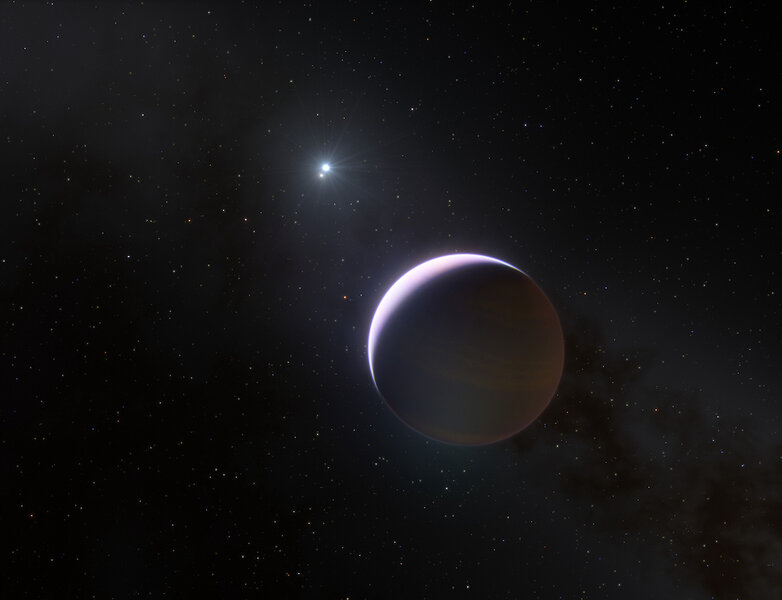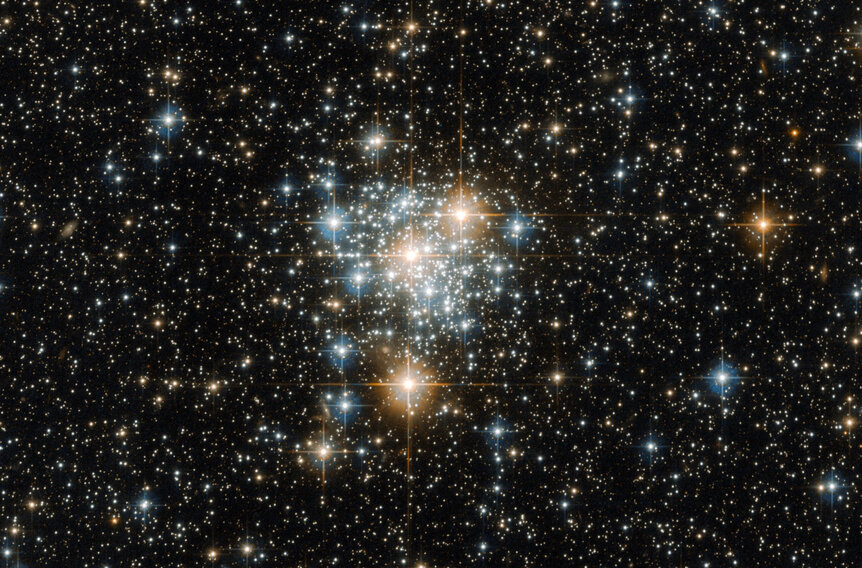The rich get richer: High-mass stars steal planets from smaller stars
Simulations show some stars possess purloined planets.

With 5,000+ exoplanets now confirmed to exist, and dozens if not hundreds of still-forming planetary systems observed, we have a pretty good idea in general of how planets form around stars.
In brief, locally dense knots of material in clouds of gas collapse, start spinning, and flatten into a disk. The stuff in the center forms the star, and stuff farther out can coalesce into planets. A lot of the details I’ve skipped over are also pretty well understood, while other are still being figured out.
This is the story for low-mass stars like the Sun, at least. For stars up to about twice the Sun’s mass the system is stable enough to form stars. However, more massive stars cause problems. Starting around 2.4 times the Sun’s mass, stars tend to blast out a lot of ultraviolet radiation, and this can cause the disk around them to evaporate, breaking up the chemical bonds in molecules and heating the gas so much it cannot form planets.
RELATED: Keck and JWST team up to watch as massive stars blast away gas in the Orion Nebula
But here’s the weird part: We do see some massive stars with planets. Despite having a lot more material to work with in the protoplanetary disk, though, planets around massive stars are rare, likely due to that flood of UV light. It’s possible that some could form as the material in the disk clumps up far from the star, but this gets less likely the more massive the star is.
Despite this, at least two massive stars are known to have planets.
The B-star Exoplanet Abundance STudy, or BEAST, is a project to look for such planets. Massive stars die young, so the best place to find lots of them is in young star clusters, ones that are less than say 15 million years old. BEAST examined the Scorpius-Centaurus association, a loosely bound collection of hundreds of young stars just 400 light-years from Earth.
Two stars bore planets. One, called b Centauri — not Beta Centauri, which is a very different star — is a binary star where one of the stars is 5-6 times the Sun’s mass, and the other 1-4. The planet is a super-Jupiter, possibly 10 times as massive as Jupiter, orbiting a whopping 550 times the Earth-Sun distance; even distant Neptune is only 30 times Earth’s distance from the Sun.
The second star, μ2 Sco, is a bruiser 9 times the Sun’s mass, and has two super-Jupiters orbiting it. One is 21 times the Earth-Sun distance, the other 290.
How is this possible?
To find out, a team of astronomers ran gravitational simulations of the conditions inside an association. They used 1,000 stars with a realistic range of masses, and gave planets to half the low-mass stars in them. They then let their motions dictate how they behaved over a 10 million year period to see what happens to the planets [link to paper].
They found that massive stars can acquire planets in two ways: One is to capture free-floating planets in the association — planets that were either ejected into interstellar space by a previous close pass of another star or by interactions with other planets in the system — or they stole them directly from another star.
In the 20 simulations they ran, the saw 7 planets stolen directly and 11 free-floaters captured. That means that for every association with 1,000 stars in it, you expect something like one massive star system to have an ill-gotten planet that formed around a different star.
That’s amazing. They saw differences between the two as well; captured free-floating planets tended to have wide orbits around the thieving star, generally more than 200 times the Earth-Sun distance. Ones directly stolen had much smaller orbits.
If that’s the general case, then it’s likely that the planet orbiting b Cen was captured after being ejected by its true parent star. The outer planet of μ2 Sco is likely the same, while the inner one was more likely directly stolen — it’s incredibly unlikely to have formed so close to such a massive star either way.
The simulations are low-number statistics, so you have to be careful interpreting them. Random noise could affect the results, like flipping a coin and getting heads a few times in a row. Fluctuations like that tend to smooth out the more times you run a sim, so further work could show other ways to identify these purloined planets. They see some indication that the ellipticity of the planetary orbits might change depending on how the massive star acquired it, so that could help.
We do see lower mass stars with distant planets as well. Could they have formed there, or were they also pinched from close-by stars? How many planets do we see in the galaxy that don’t orbit their original parent star?
We’re still in the early stages of finding planets around other stars. There are likely hundreds of billions if not trillions of them in our galaxy alone. As we find even more we’ll get better statistics on them, and be better able to categorize them. Given what we’ve seen so far, the vast majority will be found orbiting their parent stars… but not all of them will.






























